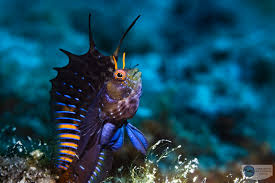The Influence of Dragons in Contemporary Chinese Art
Dragons have been a defining symbol in Chinese culture for thousands of years, appearing in mythology, literature, philosophy, and various art forms. Traditionally associated with power, wisdom, and divine protection, dragons have evolved from ancient folklore to a significant motif in contemporary Chinese art. Modern artists reinterpret the dragon through innovative artistic expressions, blending historical symbolism with contemporary themes.
This article explores the evolution of dragon imagery in modern Chinese art, its significance in various artistic disciplines, and how it reflects China’s cultural identity and modern aspirations.
1. Dragons in Modern Chinese Painting
The Transformation from Traditional Ink Paintings to Contemporary Styles
Chinese ink painting (水墨画, Shuǐmòhuà) has long been a dominant art form, with dragons appearing frequently in scroll paintings, calligraphy, and landscape art. However, contemporary Chinese artists have transformed this traditional medium into a more expressive and abstract form, integrating Western influences while maintaining the spiritual and philosophical essence of the dragon.
- Xu Beihong (徐悲鸿), a 20th-century artist, blended Western realism with Chinese traditional ink techniques, portraying dragons as dynamic forces of nature, symbolizing national strength.
- Ai Xuan (艾轩) and other modern ink painters have incorporated dragons into surreal landscapes, emphasizing their role as guardians of nature and cosmic energy.
Contemporary dragon paintings often use bold strokes, abstract designs, and modern color palettes to reflect themes of urbanization, globalization, and China’s evolving identity.
The Dragon as a Political and Cultural Symbol in Painting
In post-1949 China, dragon imagery in art was sometimes suppressed due to political changes, but in recent decades, it has reemerged as a symbol of national pride.
- Wang Guangyi (王广义), a contemporary political pop artist, has used dragons in satirical artworks that explore the relationship between capitalism, tradition, and Chinese nationalism.
- Zhang Xiaogang (张晓刚), famous for his surreal family portraits, subtly incorporates dragon symbolism to critique cultural heritage and generational transformation in China.
Modern dragon paintings serve as a bridge between historical tradition and contemporary political discourse, reflecting China’s modernization and complex cultural identity.
2. Dragons in Contemporary Chinese Sculpture and Installations
Urban Sculptures and Public Art
Dragons have become a central feature in public art and large-scale sculptures, often representing China’s economic growth and urban development.
- The Beijing Olympic Stadium (鸟巢, Bird’s Nest) was designed with a structure resembling a dragon’s scales, reflecting China’s rising global status.
- Famous dragon sculptures in cities like Shanghai, Guangzhou, and Hong Kong showcase the fusion of modern architecture with cultural heritage.
Public dragon sculptures today incorporate modern materials such as steel, glass, and LED lights, emphasizing themes of technological advancement and national pride.
Contemporary Installation Art Featuring Dragons
Contemporary Chinese artists are using installation art to reinterpret the dragon in unexpected and provocative ways.
- Cai Guo-Qiang (蔡国强), a world-renowned artist known for his gunpowder art and explosive installations, has created dragon-inspired works that explore cosmology, environmentalism, and spiritual transcendence.
- Xu Bing (徐冰) crafted a giant dragon sculpture made of recycled materials, symbolizing China’s rapid industrialization and environmental concerns.
These contemporary dragon installations challenge viewers to reconsider the balance between tradition, progress, and sustainability in modern society.
3. Dragons in Contemporary Chinese Fashion and Design
The Revival of Dragon Motifs in Fashion
Chinese fashion designers are increasingly reinterpreting dragon imagery in high fashion, blending traditional motifs with modern aesthetics.
- Guo Pei (郭培), China’s most renowned haute couture designer, has incorporated dragon embroidery in her gowns, worn by global celebrities such as Rihanna at the Met Gala.
- Li Ning (李宁) and other sportswear brands have incorporated dragon symbols into modern streetwear, connecting youth culture with ancient mythology.
Dragon motifs in fashion today symbolize both cultural pride and avant-garde creativity, making them a central feature in global fashion trends.
Dragons in Graphic Design and Digital Art
The rise of digital art and graphic design has led to a resurgence of dragon imagery in brand logos, video games, and movie posters.
- Tencent (腾讯), one of China’s biggest tech companies, frequently integrates dragon-inspired designs in gaming and AI technology, reinforcing their connection to strength and innovation.
- Famous digital artists such as Yang Yongliang (杨泳梁) use dragon imagery in cyberpunk-style cityscapes, reflecting China’s technological ambition and futuristic vision.
This digital evolution of dragons showcases China’s growing influence in both traditional and digital art on the global stage.
4. Dragons in Contemporary Chinese Film and Animation
The Evolution of Dragons in Chinese Cinema
The dragon has been a recurring theme in Chinese film, from historical epics to fantasy blockbusters.
- Zhang Yimou (张艺谋), known for his visually stunning films, has frequently used dragon symbolism to depict themes of power, fate, and martial arts philosophy in movies like Hero (英雄) and House of Flying Daggers (十面埋伏).
- The 2021 animated film White Snake (白蛇:缘起) reimagines ancient Chinese folklore with modern CGI dragons, bringing the legend to a global audience.
Modern Chinese cinema continues to reinvent dragon mythology, adapting it for international storytelling and visual spectacle.
The Rise of Dragons in Chinese Video Games and Anime
The global gaming industry has also seen an influx of Chinese-made games featuring dragons.
- Genshin Impact (原神), a globally successful game, showcases dragons inspired by Chinese mythology, blending them with modern fantasy elements.
- Nezha: Birth of the Demon Child (哪吒之魔童降世) presents dragons as both antagonists and protectors, reflecting traditional Daoist dualism.
Dragons in gaming and animation reflect China’s soft power and creative storytelling in modern entertainment industries.
5. The Dragon as a Symbol of China’s Global Identity
Dragons in International Contemporary Art
Chinese artists are using dragon imagery to engage with global audiences, redefining how China is perceived internationally.
- Ai Weiwei (艾未未), an influential contemporary artist, has used dragon imagery to critique political censorship and human rights.
- Liu Bolin (刘勃麟), famous for his camouflage art, has blended his body with dragon paintings, symbolizing the fusion of personal identity with cultural heritage.
These global interpretations of dragons highlight China’s evolving place in the world, from tradition to modernity, local identity to international influence.
Conclusion
The dragon remains a powerful and evolving symbol in contemporary Chinese art, bridging history and innovation, tradition and modernity. Whether in painting, sculpture, fashion, digital art, film, or gaming, dragons continue to shape China’s artistic expression and reflect its cultural transformation in the 21st century.
As contemporary Chinese artists continue to push creative boundaries, the dragon will remain a timeless emblem of strength, wisdom, and national pride, adapting to new artistic movements while preserving its legendary legacy.



